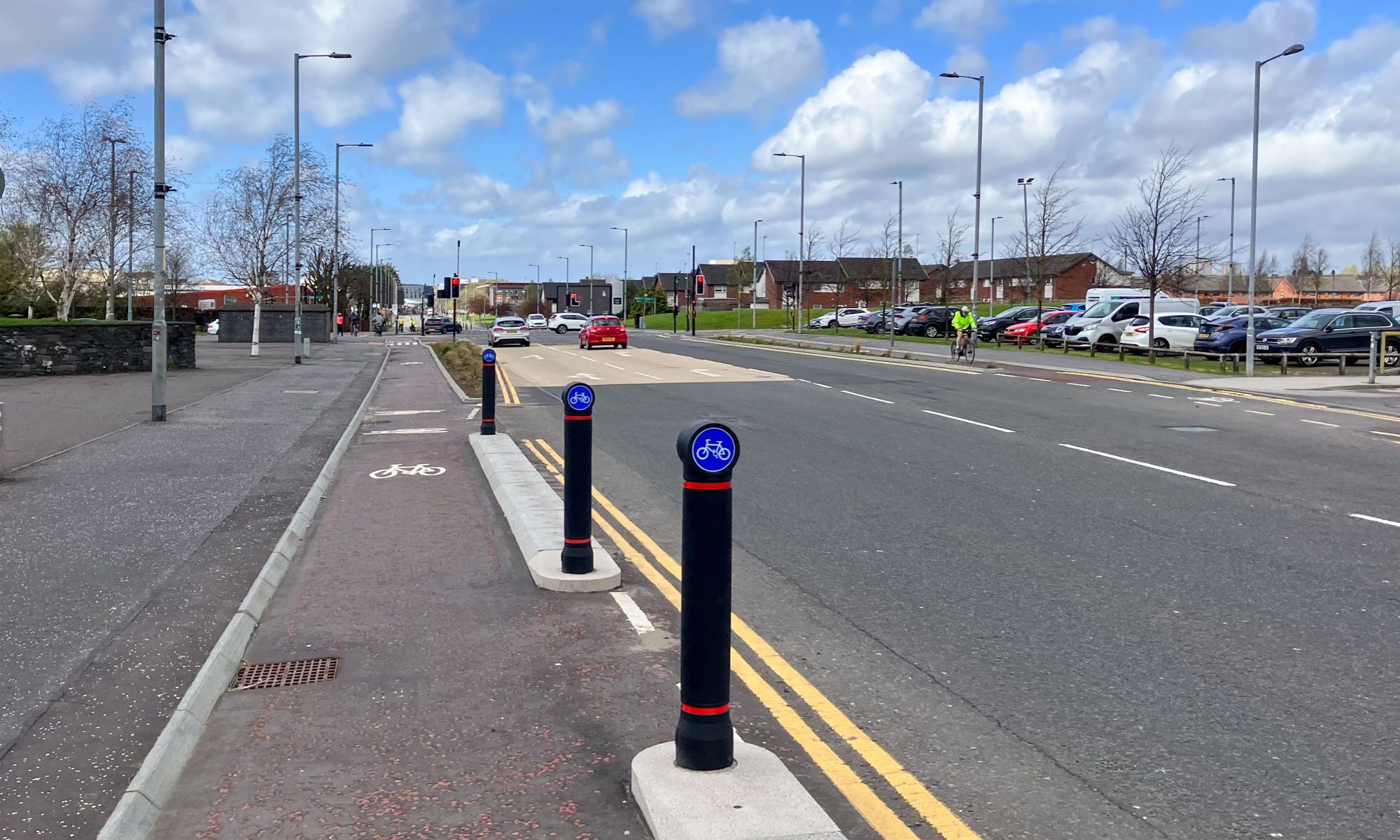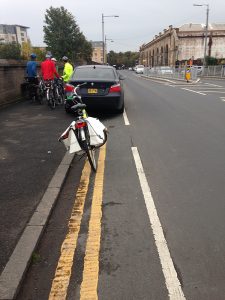
We have been made aware of this open consultation event. Controlling car parking is critical, but we must ensure that it is not done at the expense of permeability for cycling, thus discouraging active travel. Contraflow cycling lanes are becoming common throughout the city; Gordon Street, Dalnair Street and West Princes Street are just a few examples. If streets that are currently two-way are proposed for one-way to allow the storage of motor vehicles on both sides without exempting bikes, as has happened in Dowanhill East, then please object. The relevant part of the City Council’s design guide, Cycling by Design is clause 5.1.5
If you live in, work in, or travel through this area, do please get along to the consultation:
HYNDLAND / HUGHENDEN AND DOWANHILL WEST
PROPOSED PARKING CONTROLS
PUBLIC CONSULTATION EXHIBITION – Venue: PARTICK LIBRARY
Exhibition Open to View from Monday 30 October to Monday 6 November 2017
On the following dates, council staff will also be present to answer queries & discuss proposals.
- Tuesday 31 October, 10am to 4pm
- Thursday 2 November, 10am to 6pm
- Friday 3 November, 10am to 4pm
===========================================
Glasgow City Council are writing to inform you of the commencement of a voluntary consultation for the proposed Hyndland, Hughenden and Dowanhill West area parking controlled zone prior to the commencement of the statutory traffic regulation order (TRO) process.
Glasgow City Council is currently undertaking the development and introduction of significant parking control schemes throughout the Glasgow area. This includes Hillhead, Garnethill and the Partick area. Due to its scale, the Partick area has been split into separate schemes to facilitate the traffic regulation order (TRO) promotion and implementation process namely Partick, Hyndland/Hughenden, Dowanhill West areas and the Dumbarton Road/Argyle Street corridor.
The West End of Glasgow has excellent bus, train and subway transport links which unfortunately attracts commuters driving to the area and using the residential streets to park‑and‑ride resulting in the kerbside road space being sterilised by all day parking with indiscriminate and obstructive parking practices commonplace. The introduction of parking controls is an effective way of managing the demand for the finite road space available by preventing all day parking thus reducing the traffic attracted to the area whilst increasing the turnover of parking spaces and improving the safety and traffic flow. Parking controls also maintains access for emergency service, refuse collection and delivery vehicles etc. and also assists the Council in undertaking routine road maintenance such as channel and gully cleaning work and road/ footway repairs.
Prior to the commencement of statutory traffic order process for the Hyndland, Hughenden and Dowanhill West schemes the Council is holding a public exhibition in Partick Library from Monday 30 October to Monday 6 November 2017. Council Officers will be in attendance to answer queries and discuss proposals on Tuesday 31 October, Thursday 2 November and Friday 3 November, as stated above.
A letter will be issued to all affected addresses within the proposed zone providing a brief summary of the proposals and will also inform of the public exhibition.
Pre-meeting Info – Statutory Process for Parking Restrictions
Pre-meeting Info – Glasgow City Councils Local Transport Strategy in relation to Parking
Pre-meeting Info – Existing Parking Zones within Glasgow























 Car blocking the dropped kerb at the end of Carmichael Place where there is access to and from the riverside path through to Tantallon Road – and yes, the car is parked on the double yellow lines.
Car blocking the dropped kerb at the end of Carmichael Place where there is access to and from the riverside path through to Tantallon Road – and yes, the car is parked on the double yellow lines. Aikenhead Road at Hampden
Aikenhead Road at Hampden Car blocking the cut-through from Balvicar Road to Pollokshaws Road, the end of the route we took.
Car blocking the cut-through from Balvicar Road to Pollokshaws Road, the end of the route we took.


 Clarence Drive
Clarence Drive





